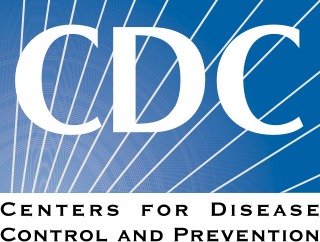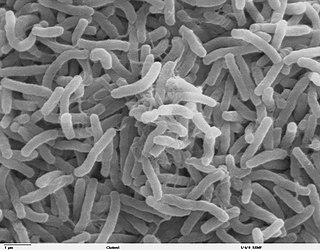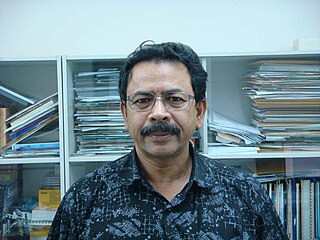PulseNet is a network run by the Centers for Disease Control and Prevention (CDC) which brings together public health and food regulatory agency laboratories around the United States. [1] Through the network, cooperating groups can share pulsed field gel electrophoresis (PFGE) results which act as fingerprints to distinguish strains of organisms such as E. coli (O157:H7 and non O157), Salmonella, Shigella, Listeria, Campylobacter, Vibrio cholerae, Vibrio parahaemolyticus and Yersinia pestis. In this way, efforts to combat infectious disease outbreaks are strengthened. Specifically, by sharing results, it is easier to identify large-scale outbreaks. For example, if an outbreak of E. coli occurred in two distant parts of the country, PulseNet might help prove a link between the two. In such a case, the pathogen would have the same genetic fingerprint at both locations.

The Centers for Disease Control and Prevention (CDC) is the leading national public health institute of the United States. The CDC is a United States federal agency under the Department of Health and Human Services and is headquartered in Atlanta, Georgia.

Public health has been defined as "the science and art of preventing disease, prolonging life and promoting human health through organized efforts and informed choices of society, organizations, public and private, communities and individuals". Analyzing the health of a population and the threats it faces is the basis for public health. The public can be as small as a handful of people or as large as a village or an entire city; in the case of a pandemic it may encompass several continents. The concept of health takes into account physical, psychological and social well-being. As such, according to the World Health Organization, it is not merely the absence of disease or infirmity.

The United States of America (USA), commonly known as the United States or America, is a country comprising 50 states, a federal district, five major self-governing territories, and various possessions. At 3.8 million square miles, the United States is the world's third or fourth largest country by total area and is slightly smaller than the entire continent of Europe's 3.9 million square miles. With a population of over 327 million people, the U.S. is the third most populous country. The capital is Washington, D.C., and the most populous city is New York City. Most of the country is located contiguously in North America between Canada and Mexico.
Due to the success of Pulsenet USA since its inception in 1996, similar networks have been established internationally in Canada (2000), the Asia Pacific (2002), Europe (2003), [2] Latin America (2003), [3] and the Middle East (2006). These networks collaborate under the umbrella of PulseNet International. [4] PulseNet participants use the BioNumerics software suite for database maintenance, tiff image normalization, and analysis and pattern comparisons. [5]
BioNumerics is a suite of bioinformatics software applications developed by the company Applied Maths NV.
The objectives of PulseNet International are to perform molecular surveillance of foodborne diseases at the global level in order to facilitate international outbreak detection and investigation by partnering with public health laboratories throughout the world and by building capacity for molecular surveillance of foodborne pathogens.
In epidemiology, an outbreak is a sudden increase in occurrences of a disease in a particular time and place. It may affect a small and localized group or impact upon thousands of people across an entire continent. Four linked cases of a rare infectious disease may be sufficient to constitute an outbreak. Outbreaks include epidemics, which term is normally only used for infectious diseases, as well as diseases with an environmental origin, such as a water or foodborne disease. They may affect a region in a country or a group of countries. Pandemics are near-global disease outbreaks.

Surveillance is the monitoring of behavior, activities, or information for the purpose of influencing, managing or directing. This can include observation from a distance by means of electronic equipment, such as closed-circuit television (CCTV), or interception of electronically transmitted information, such as Internet traffic. It can also include simple technical methods, such as human intelligence gathering and postal interception.
Additionally, the participants collaborate on the development, validation and implementation of internationally standardized subtyping methods to be used in the networks and perform collaborative studies on the geographic distribution and spread of different clones of foodborne pathogens.







